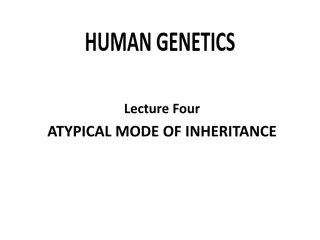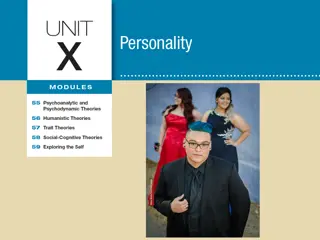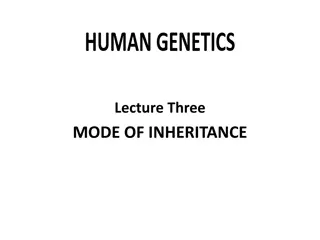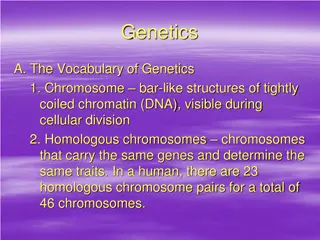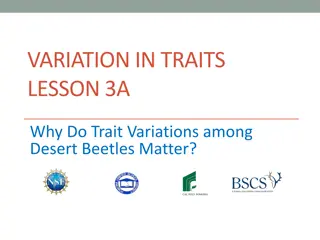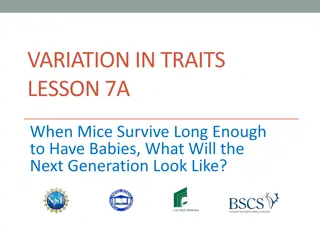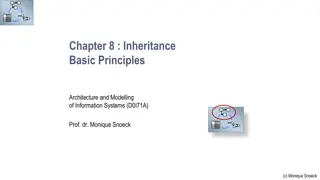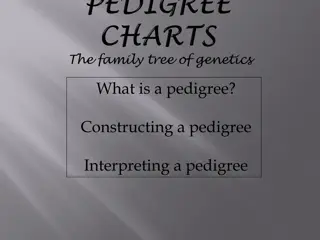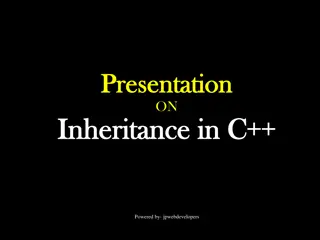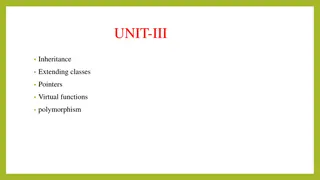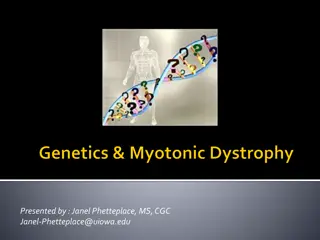Understanding Trait Inheritance for Real-World Problem Solving
Discover how the study of trait inheritance in genetics helps solve real-world problems through examples like the Wilson family case study. Explore key concepts such as chromosomes, genes, alleles, dominant and recessive traits, and the Hansen family pedigree to grasp the significance of genetic inheritance in understanding variations within species. Uncover the critical role of alleles in determining traits and the importance of recognizing dominant and recessive genetic patterns in individuals.
Download Presentation

Please find below an Image/Link to download the presentation.
The content on the website is provided AS IS for your information and personal use only. It may not be sold, licensed, or shared on other websites without obtaining consent from the author. Download presentation by click this link. If you encounter any issues during the download, it is possible that the publisher has removed the file from their server.
E N D
Presentation Transcript
GENETICS LESSON 6B How Can Ideas about Trait Inheritance Help Solve Real-World Problems?
Review: The Wilson Family Case Study Let s review some important science ideas about inheritance that we ve been building on throughout this unit on genetics. We ll use examples from the Wilson family case study and pedigree to see what we ve learned about these topics: Chromosomes Genes and alleles Dominant and recessive alleles Dominant and recessive traits
Key Science Ideas about Inheritance 1. For certain traits, individuals get a set of instructions called a gene from each parent. Different forms of the same gene are called alleles. 2. Some alleles are dominant, which means they override any other instructions for a trait, and offspring will exhibit the dominant trait even if a recessive allele is present. 3. Recessive alleles provide instructions for a trait variation that will appear in offspring only when two recessive alleles one from each parent are paired.
Key Science Ideas about Inheritance 4. Individuals with a trait controlled by a recessive allele must have two recessive alleles, which means they got one from their mother and one from their father. 5. Individuals with a trait controlled by a dominant allele might have two dominant alleles for that trait or a dominant allele from one parent and a recessive allele from the other parent.
Lesson Focus Question How can ideas about trait inheritance help solve real-world problems?
Unit Central Question Why are individuals of a species different from one another?
The Hansen Family Pedigree Shade the circle or square of any family member who has a bad rash. If the pattern seems to indicate that this skin condition is an inherited trait, write the two-letter allele combination (SS, Ss, or ss) underneath each family member s name. (Remember: A capital letter represents a dominant allele, and a lowercase letter represents a recessive allele.) If more than one allele combination is possible for an individual, write both combinations under that person s name.
The Hansen Family Several members of the Hansen family have a bad rash that their doctor thinks is an inherited condition. But it s unclear whether this trait is caused by a dominant allele (S) or a recessive allele (s). How can we find out?
The Hansen Family Case Study Small groups: Read through the case study (handout 6.3) and discuss the questions in your group. Shade in the pedigree chart (handout 6.4) based on the information provided. As you work through this challenge together, think about two questions: 1. Does the pattern of inheritance match what might be expected if the skin rash were a dominant trait? 2. Does the pattern of inheritance match what might be expected if the skin rash were a recessive trait?
What Did You Decide? Do you think this skin condition is caused by genes that offspring have inherited from their parents? Or do you believe there must be some other cause? Support your answers with evidence from the Hansen family pedigree.
Lesson Focus Question How can ideas about trait inheritance help solve real-world problems?
Unit Central Question Why are individuals of a species different from one another? Think-Pair-Share: Think about what you ve learned in this unit that might help you answer this question and share your ideas with a partner. Then write your best answer in your science notebook. Use these key terms in your response: Chromosome Gene Allele Dominant Recessive Trait Inherit
Future Lessons on Genetics There s much more to learn about trait variations among individuals of species, including how the environment and other factors influence traits. So stay tuned for future lessons on genetics!







